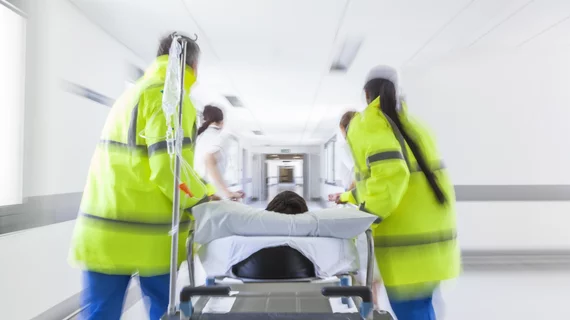Ninety-one percent of the U.S. population lives within an hour of an emergency stroke center and 90% reside within 60 minutes of a telestroke emergency department, according to new data published in JAMA Network Open.
Only a decade ago, 20% of Americans lacked access to timely stroke care. In order to gain a better picture of modern day population-level access to such care, the team analyzed data from the 2019 National Emergency Department Inventory (NEDI).
They found that 96% of the population is located within 60 minutes of an ED with any acute stroke expertise. The findings will be presented at a conference of the American Stroke Association, held in New Orleans and virtually, Feb. 8-11.
“Overall, we observed a substantial increase in population access to acute stroke care in this cross-sectional study relative to previous reports using alternative methods," lead author, Kori S. Zachrison, MD, MSc, with the Department of Emergency Medicine at Massachusetts General Hospital, and colleagues wrote in the Feb. 9 research letter. “This increase likely reflects the extensive and ongoing work to improve stroke systems of care, including greater stroke center accreditation and expansion of telestroke capacity.”
Zachrison et al. also found that access to an ED in a stroke center or with telestroke capabilities varied by region, from 91% in the Mountain West time zone to 99% in the mid-Atlantic region.
Meanwhile, among the 13,191,024 people (4% of the total population) without 60-minute access, 7,905,276 (60%) were within 60 minutes of a non-telestroke, non-stroke center ED, according to the authors.
Another key finding from the team’s analysis was that in 2019, there were 5,587 EDs in the U.S., of which 2,563 (46%) were in stroke centers while 2,505 (45%) were classified as having telestroke services.
Overall, 1,101 of 3,024 EDs (36%) not located in a stroke center had telestroke capacity compared with 432 of 691 EDs (63%) in acute stroke-ready hospitals and 872 of 1,505 EDs (58%) in primary stroke centers, according to the authors.
Among the study’s limitations was self-reported telestroke capacity that was not confirmed by the study team.
“Despite improvements in stroke systems of care, many Americans still lack timely access to acute stroke intervention. Although the smaller, critical access hospitals serving patients in rural areas are the most likely to benefit from telestroke services, they are currently the least likely to have them,” the authors wrote.
The authors noted that addressing the care gap and other disparities in access will be essential to improving equitable access to acute stroke care.
Read the full study here.
Related Stroke Imaging Content:
Automated CT scoring system accurately predicts prognosis in stroke patients
New CT protocol uses scout images to expedite stroke patients' path to MRI
What decades of data tell us about stroke rates in the U.S.
Most Americans live within an hour of a stroke center
FDA warns providers about potential misuse of imaging-based software for stroke triage
Radiologists must change their approach to stroke care in the AI era
MRI findings associated with poor thrombectomy outcomes after stroke
Risk of recurrent stroke 48% higher among young marijuana users
